The best result for SDSU in conference realignment: more PhDs
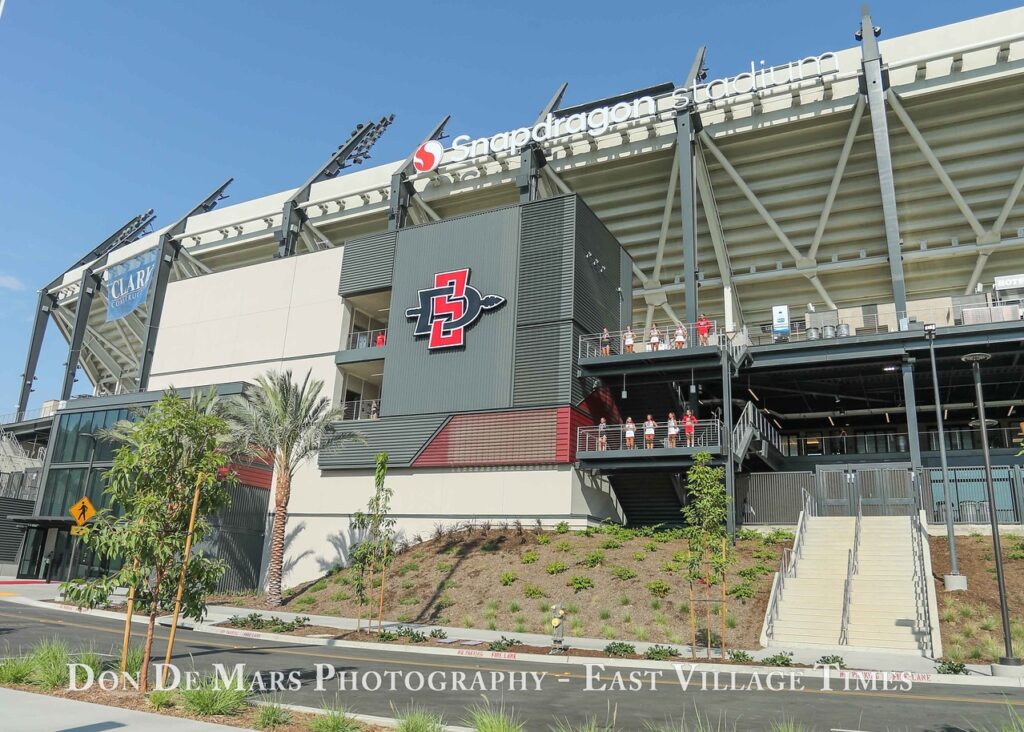
SDSU Ribbon Cutting Ceremony. Credit: Don De Mars/EVT
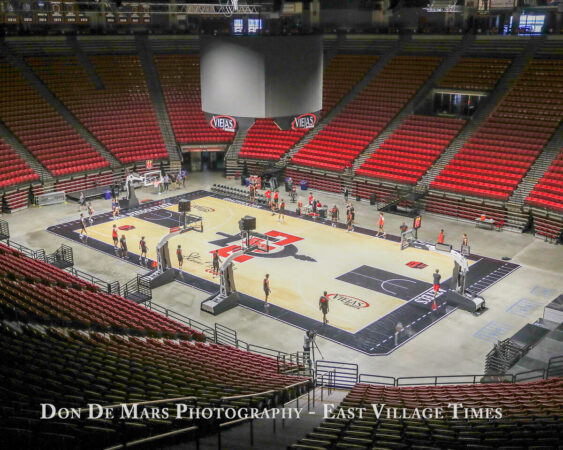
By 2024, the landscape of college athletics will be changed by the realignment decisions in 2022. Many are predicting San Diego State will be the greatest beneficiary of USC and UCLA’s decision to move to the Big Ten. Experts suggest the Aztecs are first in line to be invited to either the Pac-12 or the Big 12.
While SDSU’s growth in its current conference is undeniable, a move to a more lucrative one would give the school a chance to continue its upward trajectory. As important as larger budgets are to the athletic department, money is not the most important outcome of conference realignment for the university.
More than anything on the field, the Aztecs’ ascension into the Power 5 could open doors to allow the university to offer more doctoral programs. This is the best result for the university. It can be accomplished in two ways. Conference realignment aids both.
“If you take the Pac-12 in the conversation, everyone is an R1 (Carnegie Research Institution),” Hala Madanat, SDSU Vice President for Research & Innovation, explained to EVT in an exclusive interview. “What it means is that as an institution, we continue to invest in our research infrastructure. We continue to grow our research because that’s who you’re around. It’s synergistic because it advances both. You want to keep playing better and keep doing better research, advancing your research, and having better facilities. So, I think they are complementary.”
SDSU needs to work closer with schools in California because the law prevents the university from offering independent doctoral programs in most areas. With some notable exceptions, only by partnering with a University of California (UC) school or an in-state private institution can a Cal State University (CSU) offer the highest level of education to its students.
It can take months and even years to get any doctoral program running. Even if a CSU gathers the required expertise to offer one, there is the additional hurdle of finding a partner institution.
The prestige that comes with playing in major bowls, the opportunity for faculty to mix informally at games, and the networking that takes place when universities interact on any level could be a catalyst to deepening ties between SDSU and other institutions, especially if the school is invited to the Pac-12.
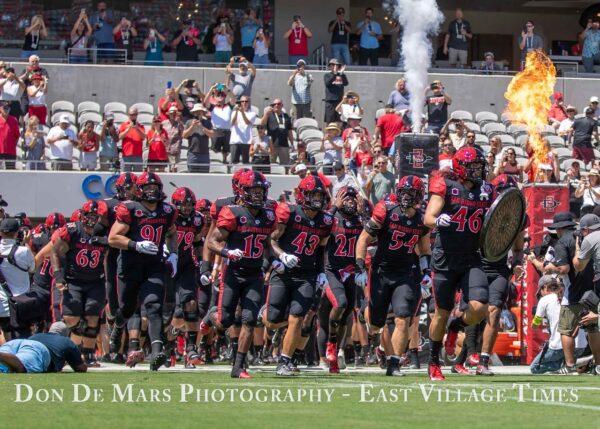
Changing the Master Plan
The law that created this challenging situation was the Donahoe Act. Created in 1960, its aim was for the UC system to focus on more theoretical sciences, with CSUs training students in more practical and vocational ends. Whatever the virtues of that decision 60 years ago, the law currently prevents CSUs from fulfilling the spirit of the Donahoe Act. SDSU and its sister institutions are unable to prepare today’s workforce because the mechanism in place is too cumbersome to respond quickly enough to the needs of the community.
A recent example reveals the issue. According to Pew Research, 60% of Americans expressed confusion over changes to the public health recommendations for slowing the spread of Covid-19. SDSU, responding to this clear need, laid the groundwork for a Health Communication PhD. Despite already having the expertise in the area, the university was unable to find the required partner, and this important work could not be carried out.
Their research would have coalesced the lessons from the pandemic allowing public officials to respond better during future emergencies. Instead, it joins the list of endeavors thwarted by California’s Master Plan.
“In my world of working with other vice presidents of research or associate vice president of research in the (CSU) system, many feel the same way that they’re limited from creating the workforce of their region in California because of the Master Plan,” Madanat said. “On our side of the CSU system, we have several institutions who have joined us in a proposal to Chancellor’s office to push for independent PhDs.”
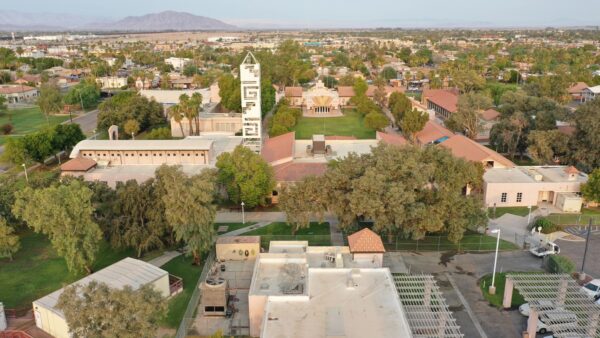
Finding a Champion
The proposal Madanat referred to was sent to the CSU Office of the Chancellor in August. EVT reached out to the Chancellor’s office for comment. Through email, a spokesperson said they are currently reviewing the proposal, weighing others, and might have information on a response in a few months.
It is up to the Chancellor’s office to get the ball moving on any potential legislation to make the needed change. According to Madanat, the office will also be searching for potential representatives inside of the California State Assembly and Senate who would champion the cause.
Assemblymember Eduardo Garcia (D-Coachella) is one of those champions.
“We would like to see our San Diego and San Bernardino California State Universities have the ability to offer PhDs to our Imperial Valley and Coachella Valley residents,” Garcia told EVT. “Our region needs and deserves access to all levels of higher education opportunities.”
As California has changed over the last 62 years, one of the unintended consequences of the Donahoe Act has been to favor wealthy, less diverse suburbs like La Jolla, Berkeley, or Bel Air over urban centers and communities outside of major cities like those Garcia represents.
Extension campuses from SDSU and CSU Bernardino are the only affordable education options for constituents in Garcia’s district, who must travel away from their homes to pursue PhDs. The Master Plan places an undue burden on poorer Californians preventing the social mobility that higher education brings from impacting those who need it most.
“California needs to make sure that our higher education system is structured around equity to provide accessibility to remote communities, create a strong state-grown workforce, and ensure we keep up with economic growth and demand in well-paying career fields that will allow families to support their households,” Garcia said.
“In this year’s state budget, we delivered a historic $160 million in higher education investments across our district, including $80 million for a new STEM building at San Diego State’s Brawley campus to support highly skilled technology and renewable energy jobs, and the region’s emerging lithium industry. Imagine the possibilities that would open up for our community by offering PhD. programs in these innovative fields.”
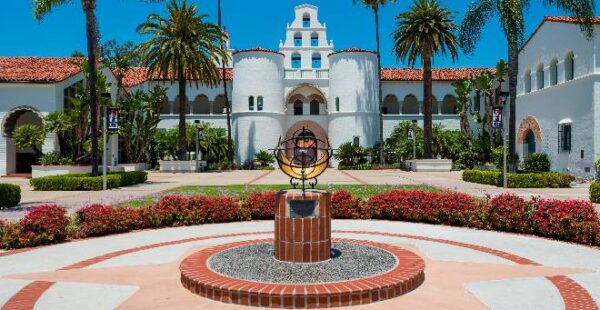
A Movement of the People
With champions like Assemblymember Garcia, there is momentum toward changing the law. Since 2005, the legislature has allowed CSUs to offer limited independent doctoral programs. This year, for example, the legislature overwhelmingly supported allowing the system to add a PhD in Public Health to their catalogs. It took 30 community letters from various public, private, and non-profit sectors to raise awareness of the need for this doctoral program. Madanat said there are at least 15 similar programs that are currently needed in the state.
“Think about Mission Valley,” Madanat explained. “This was the Friends of San Diego State. It wasn’t the institution fighting for it. It was the people, the alumni, and the community who believed this was the next phase. Independent PhDs are in the same framework, where if we are going to get there, what it takes is the voice of the people, the region, and the constituents to say, ‘You’re limiting the growth of the region by not allowing strong institutions to do what they are supposed to do.’”
Changing the Master Plan to allow CSUs to offer independent PhDs would have far-reaching implications for the way education is conducted in California. Disrupting the status quo is never easy. The benefits of SDSU’s elevation in the world of college athletics are seen again.
The same networking opportunities that could pave the way for more PhDs under the current law could also facilitate conversations between stakeholders, alleviating any fears or misunderstandings about the other side’s motives. It could create an environment of cooperation.
SDSU has never been positioned better academically or athletically. The revenue from Snapdragon Stadium alone should put the athletic department on solid footing for the foreseeable future. An invitation to a more lucrative conference would aid every sport on campus to continue competing at the highest levels.
Academically, the school is on the cusp of attaining the highest status as a Carnegie R1 research institution. The dollar amount dedicated to research is already on par with other R1 institutions. With the construction of the Innovation District set to begin in about a year, with the first three buildings scheduled to open in 2025, the infrastructure to support the research endeavors at the university will be improving significantly over the next decade, but it may not be enough to keep SDSU at this elite research tier.
[wpedon id=”49075″ align=”right”]
“The aspirational goal is (20)25,” Madanat said when asked where the school stands on reaching R1 status. “We’ve done our own analysis; that’s not impossible. It’s just an aspirational goal right now. From a future sustainability perspective, not having independent PhDs would make it harder and harder for us to maintain it. We might be able to get it, but being able to maintain it, requires our control of doctoral students, our control of the growth, our control of our students.”
The shifting landscape of college football could not have come at a better time for the university. With all that it could mean for the workforce in San Diego, Garcia’s district, and throughout California, it is clear: the best outcome for SDSU in conference realignment is offering more PhDs.
My earliest sport’s memory involve tailgating at the Murph, running down the circular exit ramps, and seeing the Padres, Chargers and Aztecs play. As a second generation Aztec, I am passionate about all things SDSU. Other interests include raising my four children, being a great husband and teaching high school.